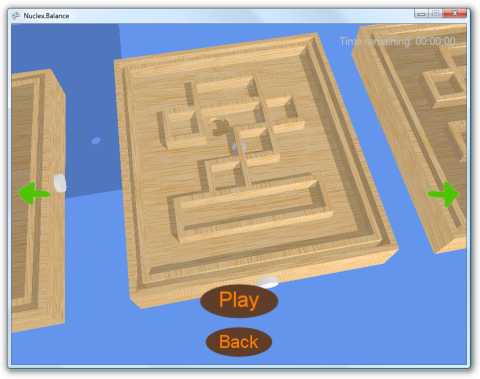Finally got a new graphics card. I had seriously considered buying a GeForce 8800,
but given the card’s insane price tag, the fact that I’m developing for XNA
(nothing to gain from DirectX 10) and ATI’s recent announcement about their
next generation GPU being out soon to lower the prices, I decided to go for a
cheap ATI Radeon X1950 card.

I didn’t totally stop working on the game, however, and wrote a small menu system
that I now use to display the game’s main menu and the level selector. Debugging
could still be accomplished running the game in a 320×240 window by using the
reference rasterizer for rendering, which produces about 1 frame in the time it
takes you to wash your car, take a walk or phone a friend…
Aforementioned menu system is already being used to drive the main menu and
a level selector, both fully working at the time of this writing. The buttons
themselfes are looking rather dull and I’m not sure yet whether I should just try
to do my best in Paint.NET or whether I should go looking for an artist…

There will be 10 built-in levels that the player can try to beat in a certain
time to complete the game. I think 10 levels are just right to entertain the
player for a while and then let him off before the game gets boring. I truly
think it’s a nice and fun game, but, after all, it’s just a ball rolling around
on a table — hardly enough variety to make 100 levels worthwhile :)

